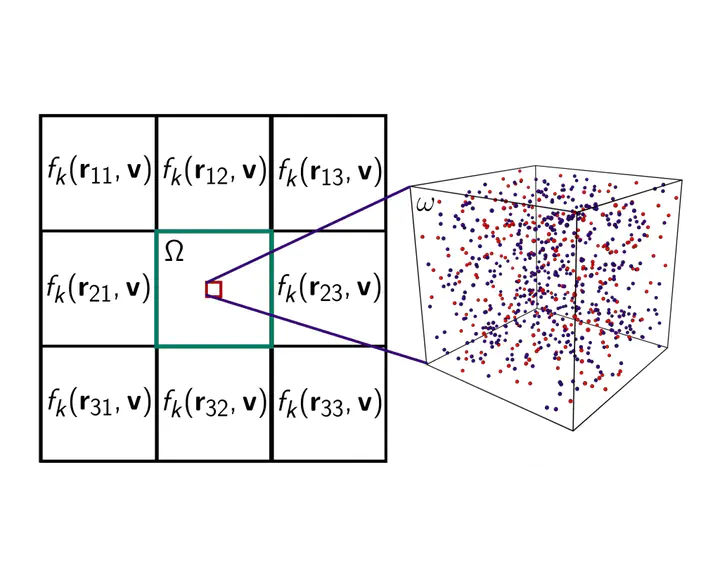Simulating Plasma with the Heterogeneous Multiscal Method
 A cartoon of a molecular dynamics simulation embedded in a kinetic grid
A cartoon of a molecular dynamics simulation embedded in a kinetic grid
Plasma is a state of matter in which electrons have been separated from their nuclei, yielding a mass of positively charged ions embedded in a cloud of electrons. Due to the high energy nature of plasma (it occurs in stars and nuclear fusion reactions), it is often the case that simple hydrodynamic models cannot properly capture the dynamics of the system. Kinetic models, which track the probability densities of velocities of each ion type instead of simply the average velocity, are more appropriate.
Unfortunately, these kinetic models are often poorly defined, with challenging terms being approximated and parameters estimated. In this project, we developed a multiphysics model that used small molecular dynamics simulations to inform the coarse kinetic theory dynamics. Our algorithm simulates quickly in the kinetic theory domain, pausing only infrequently to query a molecular dynamics simulation for a parameter needed to advance the kinetic simulation.
The result is an algorithm that captures the best of both worlds: it is dramatically faster than a full-scale molecular dynamics simulation, but it is more accurate than a standard kinetic theory simulation. We hope this approach will allow us to better simulate plasma systems in which molecular effects may be important at some times and locations.
Collaborators:
- Gil Shohet (Stanford University)
- Michael Murillo (Michigan State University)
- Jeff Haack (Los Alamos National Laboratory)
- Mathieu Marciante (Los Alamos National Laboratory)
Future Projects:
- Apply the method to a one-dimensional system (only a zero-dimensional proof-of-concept has been comopleted)
- Improve the efficiency of the algorithm by minimizing queries to the molecular dynamics simulations